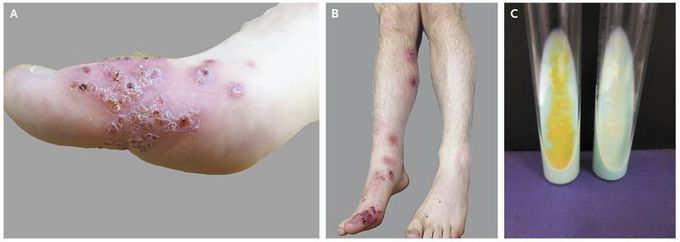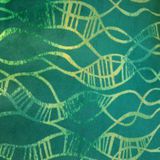


Sporotrichoid Mycobacterial Infection
A 25-year-old man with Crohn’s disease that was well controlled with infliximab therapy presented with a vesicular eruption that had affected his right great toe for 3 months (Panel A). He reported having had no contact with aquariums, fish, or saltwater with his bare feet. Ascending pink, painful nodules, which exuded yellow fluid, developed on his right leg (Panel B). Tissue cultures grew smooth photochromogenic colonies at 30°C (Panel C), and findings from biochemistry studies supported a diagnosis of Mycobacterium marinuminfection. An interferon-gamma release assay for tuberculosis was positive, although previous results had been negative. Magnetic resonance imaging revealed that deeper structures of the foot were not involved. Infliximab therapy was stopped, and the patient was treated with doxycycline and clarithromycin for 12 months, with some clinical improvement. Rifampin has been added to the treatment regimen to hasten progress and will be continued until the patient has complete resolution of the infection. Sporotrichoid lymphocutaneous spread of atypical mycobacteria has been reported in patients treated with tumor necrosis factor α (TNF-α) inhibitors, because TNF has important roles in maintaining granuloma formation and restricting mycobacterial growth within macrophages. The use of TNF-α inhibitors is widespread, and the presence of sporotrichoid eruptions in these patients should suggest the possibility of mycobacterial infection.
Super interesting micro case. I could see why it's called "sporotrihcoid" as it looks to travel lymphatics linearly. Kinda strange that no recollection of 🐠 fishtanks 😅 (not always textbook)




